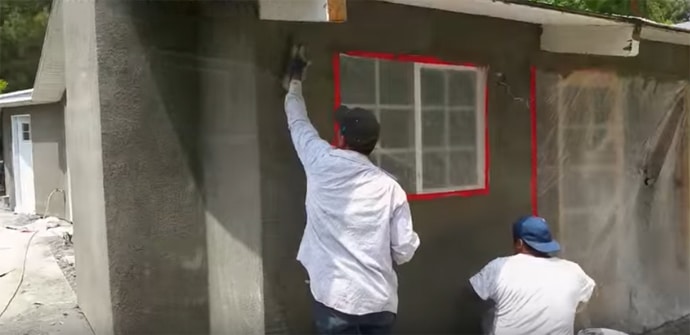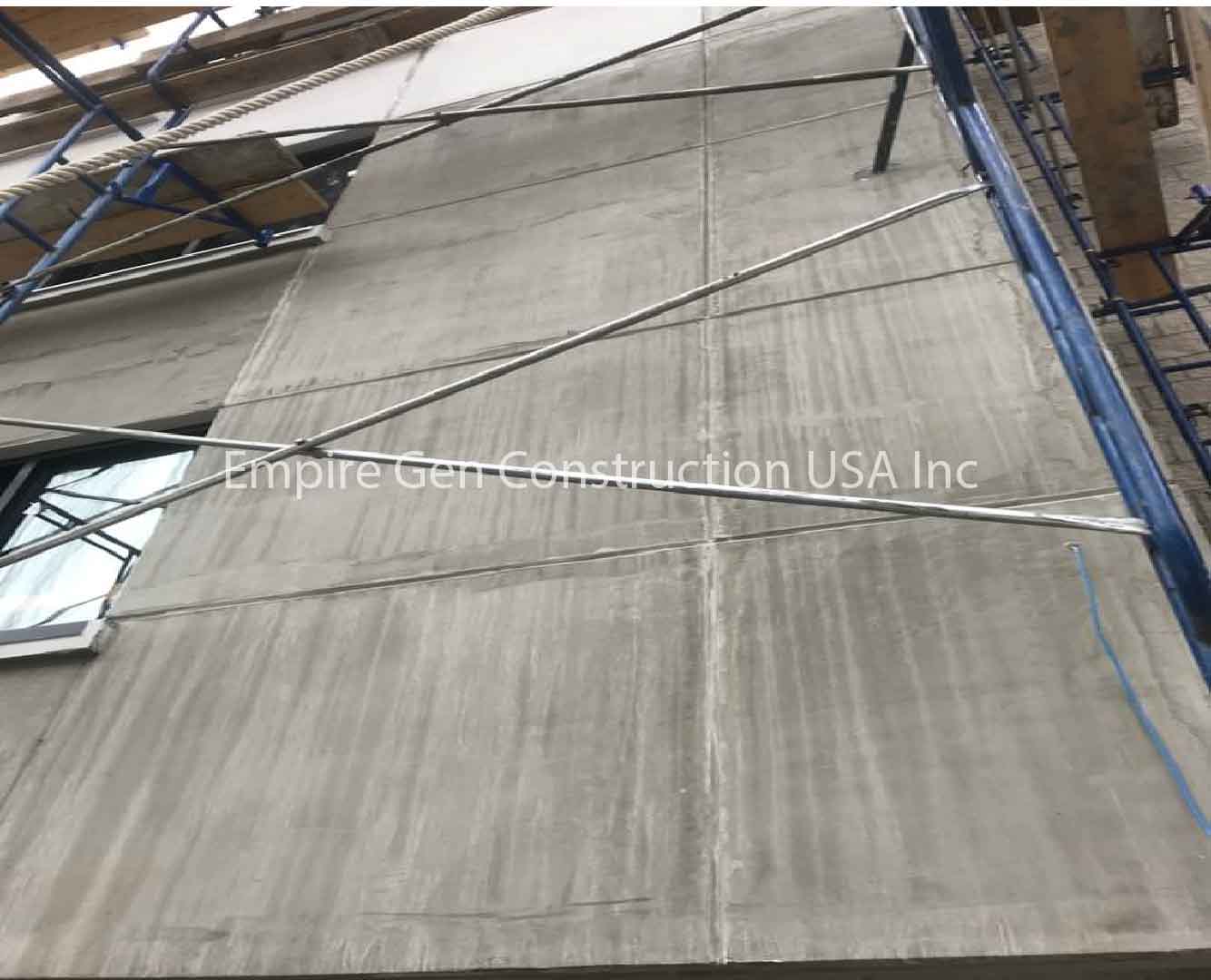What to Seek in a Highly-Rated Stucco Contractor for Your Home
What to Seek in a Highly-Rated Stucco Contractor for Your Home
Blog Article
Discovering the Adaptability of Stucco in Modern Design
Stucco has long been recognized for its visual charm and adaptability, yet its function in contemporary architecture warrants a better examination. By discovering its innovative applications, from striking facades to energy-efficient designs, one can value how stucco is redefining the boundaries of architectural expression.
Historical Relevance of Stucco
The historic value of stucco is extensive, as it has actually played an essential role in architectural techniques across various cultures for centuries. Coming from ancient human beings, stucco was utilized by the Egyptians and Greeks as a sturdy and versatile surface for both indoor and exterior surfaces. Its versatility to different environments and ability to simulate extra expensive materials made it a favored option.
In the Roman period, stucco came to be a key attractive element, used extensively in public buildings, vacation homes, and holy places. The Romans refined the application techniques, allowing for elaborate styles and relief sculptures. Throughout the Renaissance, stucco experienced a rebirth, especially in Italy, where it was employed in fancy facades and ornamental details, showcasing the artistry of the duration.

Modern Applications in Style
Stucco has actually located restored importance in modern design as a result of its convenience and aesthetic charm (stucco contractor). This typical product is progressively used in contemporary layout, connecting the space in between modern-day and traditional looks. Developers and designers value stucco for its adaptability, permitting it to be used in various designs-- from minimalist frameworks to specify Mediterranean layouts
In property projects, stucco provides a clean, seamless surface that improves the visual communication of facades. Its capacity to adapt different shapes and surfaces makes it an optimal selection for both brand-new constructions and improvement jobs. Furthermore, stucco's toughness and low maintenance demands add to its expanding popularity in metropolitan setups, where durable materials are important.
Commercial applications have actually additionally embraced stucco, with lots of organizations choosing this material to create welcoming and distinctive shops. The usage of stucco in public buildings, such as schools and recreation center, showcases its potential for developing visually attractive settings while offering exceptional insulation residential properties.
Shade and Structure Advancements
Discovering color and structure innovations in stucco has actually opened up brand-new opportunities for architects and developers, boosting the material's aesthetic effect in contemporary construction. Current improvements in pigment modern technology have allowed for a bigger spectrum of shades, making it possible for developers to create striking exteriors that integrate flawlessly with their environments or stick out as vibrant architectural declarations. This versatility in color option provides engineers the capability to evoke specific psychological responses and balance with local aesthetics.
Appearance developments have actually similarly transformed stucco applications. Strategies such as shoveling, useful source spraying, and marking have resulted in diverse surface area finishes, varying from smooth and fine-tuned to responsive and rugged. These variants not just add to the building's personality yet also play a crucial role in light interaction, boosting the aesthetic depth and dimensionality of surfaces.
Furthermore, the introduction of artificial stucco choices has actually increased layout possibilities, using boosted resilience and climate resistance while maintaining aesthetic charm. As engineers continue to try out cutting-edge shade combinations and distinctive coatings, stucco remains a critical component in contemporary style, showcasing the material's versatility and ageless significance in modern style.
Sustainability and Power Efficiency
Advancements in shade and appearance have not just boosted the aesthetic appeal of stucco but also led the way for better concentrate on sustainability and energy effectiveness in contemporary design. As environmental worries end up being significantly famous, the construction industry is transforming its focus to products that contribute favorably to ecological balance.
Stucco, composed primarily of all-natural products such as read sand, concrete, and lime, offers a sustainable alternative to even more resource-intensive building materials. Its long life and resilience reduce the demand for frequent replacements, therefore decreasing waste and resource consumption with time. Modern-day stucco formulations usually include energy-efficient additives that boost insulation residential properties, minimizing home heating and cooling costs for structures.
The reflective qualities of stucco can also be engineered to reduce warm absorption, adding to cooler interior atmospheres and less reliance on fabricated climate control systems. By advertising energy preservation and lowering the carbon footprint of frameworks, stucco lines up with the principles of lasting architecture. As building contractors and engineers embrace eco-friendly practices and cutting-edge methods, stucco stands apart as a responsible and versatile selection in contemporary design.

Study of Stucco Projects
The convenience of stucco as a structure material is exhibited in various successful architectural jobs that highlight its aesthetic and functional advantages. One significant example is the renovation of the historical Casa de la Guerra in Santa Barbara, California. Making use of stucco not only maintained the building's Spanish Colonial Rebirth design yet additionally enhanced its sturdiness and weather resistance, guaranteeing longevity while preserving building stability.
Another engaging case is the modern domestic task, the Cactus Residence in Scottsdale, Arizona. stucco contractor. This striking home attributes a smooth stucco coating that balances with the surrounding desert landscape. The stucco's light color shows warmth, adding to power effectiveness, while the distinctive surfaces include aesthetic rate of interest
In Addition, the Kings Cross redevelopment in London showcases the adaptability of stucco in metropolitan settings. The application of stucco on contemporary mixed-use structures creates a natural visual that respects historic context while welcoming contemporary style concepts.
These instance studies demonstrate exactly how stucco can offer numerous building functions, from preservation and energy effectiveness to visual enhancement, making it a functional choice in contemporary design.
Verdict
 In conclusion, stucco's historic value and modern-day adaptability make it a valuable material in modern design. As demonstrated through numerous instance researches, stucco continues to play an important role in shaping the architectural landscape of the modern era.
In conclusion, stucco's historic value and modern-day adaptability make it a valuable material in modern design. As demonstrated through numerous instance researches, stucco continues to play an important role in shaping the architectural landscape of the modern era.
In conclusion, stucco's historical significance and modern-day versatility make it an important material in modern design.
Report this page